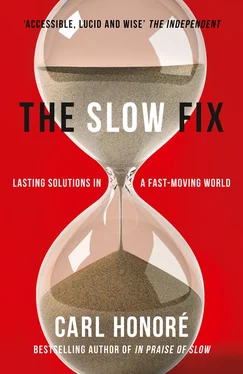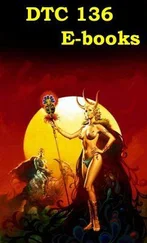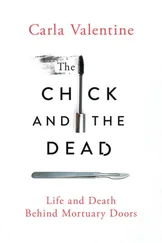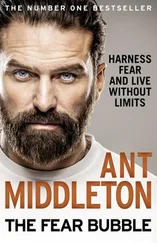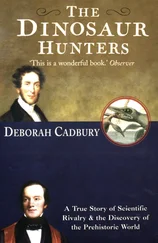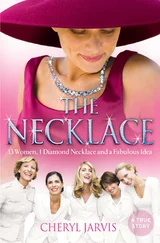Staff seem pleased with the change. Hans Petter Hermansen has been the production manager at Norsafe for more than 20 years. With his deep tan, white hair and piercing blue eyes, he looks like a cross between Giorgio Armani and the hero of Hemingway’s The Old Man and the Sea . ‘Magma have taught us to complain, even to stop production, if something is wrong in an order instead of just trying to make it work,’ he says. ‘Now we all talk and work together as a team, which means we actually do things right the first time, which is way more efficient than fixing mistakes farther down the line.’
This Slow Fix still has a long way to go. A revolution that began in the sales and contracts department is now wending its way through the rest of the company. Rolling out the changes to operations in China and Greece will take longer. Even at the headquarters in Norway, the new system is still bedding in. The day I visit, Norsafe is testing a prototype lifeboat. Several nervous designers are standing on a dock watching the vessel being scuttled in a controlled experiment. Once it starts taking on water, it fails to right itself within the three minutes stipulated by international law. The designers look perplexed, but Hermansen smiles wryly. ‘They’re scratching their heads, but I told them they needed four centimetres more foam in the sides of the canopy,’ he mutters. ‘It shows that even with the right processes in the company, people don’t always listen to you.’
Even so, Norsafe seems to have turned a corner. Contracts are cycling smoothly through the company, lifeboats are arriving on time and in good condition, and profits are up. No more lawsuits are pending and the gloom in the office has lifted. In 2011, the leading financial newspaper in Norway published an article describing Norsafe as a ‘money-making machine’. Skaala is over the moon. ‘Everything is working now and it’s actually fun coming to the office again,’ he says. ‘It’s not rocket science. It’s not hocus-pocus. It’s not hard to understand. We just needed to slow down and think hard about exactly what was going wrong with our company before we could fix it.’
Others do the same deep, slow thinking without consultants. In the late 1980s, Patagonia, the California-based maker of smart, eco-friendly outdoor gear, grew so fast that it stopped training new managers properly and lost control of its ballooning network of product divisions and distribution channels. In response, Yvon Chouinard, the founder and owner, went into quick-fix mode, restructuring the company five times in five years. ‘I was driving everyone crazy by constantly trying new ideas without a clear direction for where we were trying to go,’ he wrote later. To find that direction, Chouinard eventually pulled the Andon rope. In 1991 he took a dozen of his top managers to southern Argentina for a walkabout in the real Patagonia. Like biblical prophets seeking truth in the desert, the company brass spent two weeks rambling through the harsh, windy landscape, chewing over the Big Question: what sort of company do we want to build? They returned from Argentina with a bundle of ideas that eventually crystallised into a mission statement: ‘Make the best product, cause no unnecessary harm, and use business to inspire and implement solutions to the environmental crisis.’ To embed that creed in the chain of command, Chouinard took lower-level managers on week-long retreats in US national parks. Having taken the time to answer the Big Question, Patagonia was finally able to put its house in order, cutting out superfluous layers of management, streamlining inventories and taming its sales channels. Today the company racks up annual sales over $540 million while continuing the policy it started in 1985 of donating 1 per cent of those sales to environmental causes.
Businesses aren’t the only ones to benefit from thinking hard about problems. Under its new safety regime, the RAF uses psychologists to drill down through the so-called ‘human factors’ that play a part in every accident. ‘Each piece of the puzzle has a story, and behind that story is another story and another – whether it’s a man who left home early in the morning because he was out late last night, had an argument with his wife or partner, or got to work and the books he was meant to reference weren’t there,’ says Group Captain Brailsford. ‘We’re talking about pulling the Andon rope to get to the very bottom of each problem. It means we take longer to think before acting, but when we do act we are able to apply the right solutions to the right problems.’
The same goes for matters of the heart. To mend a broken relationship, you must take time to work out what is really going wrong before seeking the right fix. When counselling couples in Toronto, Dave Perry places a small, ceramic tortoise on the table between him and his clients. ‘It’s just a little visual reminder that you need to take the slow and patient approach to get to the heart of the matter,’ he says. ‘At first, people struggle with it because they want a quick fix, but once they feel they have permission to slow down, it comes as a huge relief.’
Taking time to identify and frame the problem is very much the modus operandi of IDEO, a global design firm famous for the deep, probing research it does before prescribing a fix. When the Memorial Hospital and Health System of South Bend, Indiana, asked for help in making plans for its new Heart and Vascular centre, the IDEO staffers spent weeks on the wards, observing, listening, asking questions. They interviewed and ran workshops with patients, families, doctors, nurses, administrators, technicians and volunteers. They even recreated the experience of arriving at the hospital for everything from a simple consultation to open-heart surgery from the point of view of the patient and family members. Many of their suggestions went into the final design of the new wing. ‘Instead of just investigating people’s needs by asking directly, “What would you like?” we take a more meditative, experiential approach that involves immersion and percolation,’ says Jane Fulton Suri, Managing Partner and Creative Director of IDEO. ‘When you spend more time getting deeply familiar with a problem, that creates space for new and surprising insights.’
It can even lead to a complete recasting of the original problem. If a client requests a new, improved toaster, IDEO might flip the question round to ask: is there a better way to make toast? Or how could breakfast be different? IDEO took a similar tack when helping Apple develop its revolutionary computer mouse in 1980. ‘Right from the start we ask, “What is the real problem we need to address?” says Fulton Suri. ‘There is always a danger that the solution is already embedded in the way we frame our original problem. If we take the time to reframe it, we can open up alternative, and often better, ways to address the real need.’
That principle is even paying off in the staid world of traffic management. When accidents occur persistently along a stretch of road, the traditional fix is to tweak the street furniture – install new lights or speed bumps, say, or put up signs urging caution. Why? Because the more guidance you give motorists, the better they drive.
Or do they? After years of watching this golden rule fail to deliver safer roads, some engineers began to wonder if they were posing the wrong question. Instead of asking what can we add to our roads to make them safer, they began asking, in the counter-intuitive style of IDEO, what would a safer road look like? What they discovered astonished them. It turns out conventional wisdom about traffic is wrong. Often, the less you tell motorists how to behave, the more safely they drive. Think about it. Most accidents occur near school gates and crosswalks or around bus and cycle lanes, which all tend to be regulated by a dense forest of signs, lights and road markings. That is because the barrage of instructions can distract drivers. It can also lull them into a false sense of security, making them more likely to race through without paying attention.
Читать дальше
